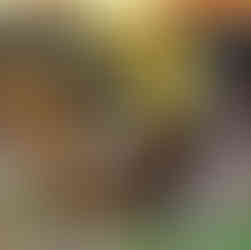Artist 26 Mickalene Thomas Painting with rhinestones, acrylic, oil, enamel, and flock on wood panel

Mickalene Thomas is a contemporary African-American feminist artist best known for her complex paintings made of rhinestones, acrylic, and enamel. Her work draws from Western art history, pop art and visual culture to examine ideas around femininity, beauty, race, sexuality, and gender.
In an interview with the Brooklyn Museum, Thomas described this experience with Carrie Mae Weems’ work as “familiar” and “transformative”, as it addressed for her questions about self-identity, sexuality, blackness and the dominant culture
Her depictions of African-American women explore notions of black female celebrity and identity while romanticizing ideas of femininity and power. Reminiscent of '70s style blaxploitation, the subjects in Thomas's paintings and collages radiate sexuality.
Se is best known for her elaborate paintings composed of rhinestones, acrylic, and enamel and that she presents a "complex vision of what it means to be a woman and expands common definitions of beauty."
Through this she explores notions of beauty from a contemporary perspective influenced by popular culture and pop art.
Thomas’s work is also distinctive in its foregrounding of queer identity and themes: she is a queer woman of color representing women of color in a way that emphasizes their erotic beauty. By emphasizing the women’s striking presence and sensuality along with their assertive gazes, Thomas empowers these subjects, representing them as resilient, stunning women who command the spectator’s attention.
My focus today will be on her paintings. I love the scale of the art and how it engulfs you and I think it reflects the boldness and power the portraits hold. It embraces female sexuality and how she draws from popular culture and Western historical poses reflects a complex commentary on art.
That commentary in part speaks of taking back power of how women are represented and what the motivation on the work is. Her work pulls away from the male gaze and ‘passive female’.

Sources consulted











Comments